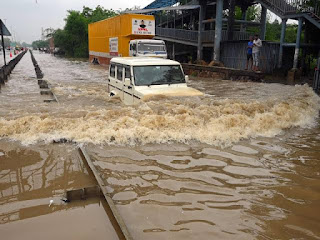Exploring the Unforgettable Journey of Apollo 13 Mission
Introduction : Describe the Apollo 13 mission as one of the most dramatic and terrifying moments in the history of space travel.
Describe its importance in terms of the difficulties encountered and lessBackground and Context-Give background information about the Apollo programme, its objectives, and the successful missions that came before Apollo 13.Draw attention to the zeal and interest the public had in the space programme at the time.
Mission Objectives
Outline the primary objectives of the Apollo 13 mission, which included a lunar landing and exploration.
Launch and Early Stages -
Describe the launch of Apollo 13 on April 11, 1970, and its initial stages, including the spacecraft's trajectory towards the Moon.
When the Apollo 13 mission was launched on April 11, 1970, it was expected to mark yet another significant advancement in mankind's voyage to the Moon. However, a calamity happened a few days into the trip when an oxygen tank exploded, endangering the crew's safe return. In their damaged spacecraft, the astronauts James A. Lovell Jr., John L. Swigert Jr., and Fred W. Haise Jr. confronted perilous situations. They were able to convert their Lunar Module into a temporary lifeboat thanks to their inventiveness, resourcefulness, and the relentless efforts of mission control. The crew successfully completed the perilous journey down to Earth under the leadership of cooperation and ingenuity, splashing down in the Pacific Ocean on April 17, 1970. The Apollo 13 mission is an example of human adaptability, teamwork, and cooperation and the unwavering spirit of investigation serve as a reminder of the successes that can come from challenges encountered while seeking knowledge.
The Oxygen Tank Incident April 13, 1970 -
Due to a confluence of electrical and design difficulties, an oxygen tank exploded in the service module two days after launch.
The crew's return trip was put in jeopardy because of the explosion, which also caused a loss of power, heat, and life support systems.
Abort Lunar Landing (April 14, 1970):
The mission was hastily changed into a "free-return" trajectory in order to bring the crew back to Earth safely once the lunar landing was ruled out.
Life Support Challenges:
Because the Lunar Module "Aquarius" only had two-person life support systems instead of three, the crew transferred there.
Power, water, and breathable air conservation were difficulties for the crew.
The crew implemented emergency measures in response to the explosion, turning off non-essential systems to save energy and putting life support services first.
Lunar Module "Lifeboat":
The crew implemented emergency measures in response to the explosion, turning off non-essential systems to save energy and putting life support services first.
Engine Burns and Course Corrections:
In order to modify the spacecraft's trajectory for a safe return to Earth, the crew and mission control carefully calculated engine burns.
Timing and coordination between the crew and ground control had to be exact for these course corrections.
Radiation Exposure Concerns:
The crew faced increased radiation exposure due to the altered trajectory, which brought them closer to the Van Allen radiation belts surrounding Earth.
Cold Temperatures:
Due to power problems, the spacecraft's temperature fell, making the crew endure chilly circumstances while travelling.
Reentry Anxieties:
As the command module reentered Earth's atmosphere, there were concerns about the integrity of the heat shield, which had been exposed to potential damage during the explosion.
Communication Challenges:
The crew and ground control worked together on inventive fixes, including constructing makeshift CO2 scrubbers out of materials on hand.
Critical engine burns were carried out to alter the spacecraft's trajectory and guarantee a reentry angle into the atmosphere.
Splashdown and Reentry (17 April 1970):
The command module "Odyssey" safely reentered Earth's atmosphere with its crew on board.
The spacecraft withstood the high reentry temperatures despite worries about the integrity of the heat shield.
The USS Iwo Jima rescued the astronauts after the command module safely splashed down in the Pacific Ocean.
Legacy and Impact:
The Apollo 13 mission served as a reminder of the value of careful planning, preparedness, and flexibility in the face of unforeseen difficulties.
It demonstrated the value of collaboration and hasty judgement under duress, both aboard the spaceship and at mission control.
Future Apollo missions' designs were improved as a result of this mission, and their safety procedures were strengthened.







Very well explained, thank you
ReplyDeleteGreat work
ReplyDeleteNice information easy to understand 👍
ReplyDeleteGreat info
ReplyDeleteNice work
ReplyDelete👍 nice
ReplyDeleteVery nice
ReplyDeleteNyc
ReplyDelete